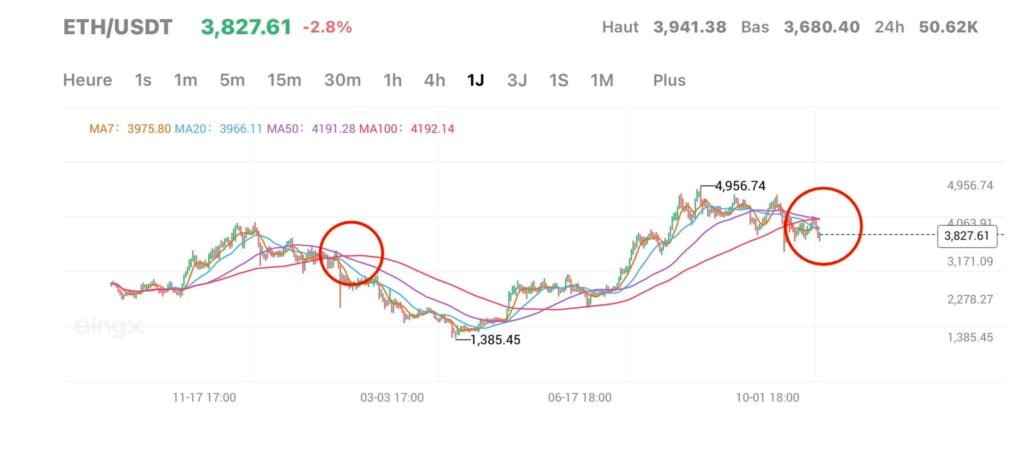As November rolls in, the cryptocurrency market finds itself at a critical juncture, particularly concerning Ethereum (ETH), the second-largest cryptocurrency by market capitalization. Investors and traders are sharply divided on whether to short Ethereum or go long, reflecting the asset’s current volatility and the wealth of external factors influencing its price.
The Bearish Case: Reasons to Short Ethereum
A segment of the market is considering shorting Ethereum, driven by several bearish indicators. Prominently, the increase in interest rates by major central banks to combat inflation is causing investors to flee riskier assets, including cryptocurrencies. This macroeconomic pressure is compounded by the looming fears of a global recession, which could decrease investor appetite for volatile investments like Ethereum.
Moreover, Ethereum’s recent transition from proof-of-work (PoW) to proof-of-stake (PoS), known as “The Merge,” while successful, has introduced new uncertainties. Critics argue that while the Merge has reduced Ethereum’s environmental impact, it might have increased centralization risks, potentially making the network more vulnerable to regulatory actions. Additionally, there are concerns about staking yields and the new supply dynamics, which could affect the token’s value.
Technical analysis also suggests a bearish outlook, with Ethereum struggling to break key resistance levels and the formation of a bearish head and shoulders pattern on the daily charts. If these patterns hold, it could indicate a further downturn in price, substantiating the case for shorting ETH.
The Bullish Case: Reasons to Go Long on Ethereum
On the flip side, many market participants are optimistic about Ethereum’s prospects and are considering long positions. This perspective is buoyed by the successful completion of the Merge, which many believe could lead to increased adoption of Ethereum due to its enhanced efficiency and sustainability. A noticeable reduction in Ethereum’s energy consumption post-Merge positions it favorably in the eyes of institutional investors concerned with environmental sustainability.
Ethereum’s growing ecosystem, fueled by developments in decentralized finance (DeFi), non-fungible tokens (NFTs), and the broader Web3 landscape, continues to attract significant interest. The ongoing innovations and the resultant network effects could potentially increase the demand for ETH, driving up its price.
Further bullish sentiment is supported by the technical outlook. After a period of correction, some analysts observe that Ethereum is undervalued, noting potential bullish divergence signals on key momentum indicators like the Relative Strength Index (RSI) and Moving Average Convergence Divergence (MACD).
Market Sentiment and External Factors
Global economic indicators, upcoming regulatory announcements, and geopolitical tensions continue to heavily influence investor sentiment. Any positive news regarding crypto regulation or technological advancements from Ethereum could provide the necessary catalyst for a bullish trend.
Furthermore, external market dynamics such as the performance of Bitcoin, investor sentiment in traditional finance, and liquidity conditions in the cryptocurrency market will play crucial roles in determining Ethereum’s direction.
Conclusion
The decision to short Ethereum or go long this November does not have a clear-cut answer and largely depends on one’s market outlook, risk tolerance, and belief in Ethereum’s fundamental value drivers. Both sides of the camp have compelling arguments, and as such, traders should place careful bets, possibly hedging their exposures to manage risks effectively.
As Ethereum continues to navigate through these complex interplays of market forces and technological developments, market participants will need to stay informed and agile, ready to pivot their strategies in response to new information.



